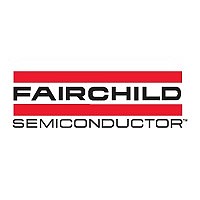CQX16 Fairchild Optoelectronics Group, CQX16 Datasheet - Page 40

CQX16
Manufacturer Part Number
CQX16
Description
DIODE IR EMITTING GAAS TO-46
Manufacturer
Fairchild Optoelectronics Group
Datasheet
1.CQX16.pdf
(42 pages)
Specifications of CQX16
Current - Dc Forward (if)
100mA
Wavelength
940nm
Viewing Angle
16°
Orientation
Top View
Mounting Type
Through Hole
Package / Case
TO-46
Lead Free Status / RoHS Status
Lead free / RoHS Compliant
Voltage - Forward (vf) Typ
-
Radiant Intensity (ie) Min @ If
-
Frequently Asked Questions
What is the greatest distance
at which an infrared solution will
still work?
There is no absolute answer to this ques-
tion, rather it depends on the applica-
tion. In most cases, by pulsing the emit-
ter with a high drive current and using a
sensitive photosensor, such as a photodar-
lington, one can expand the range.
www.fairchildsemi.com/infrared
The range for detecting an object by
reflection can be from less than 1 mm
up to 400 mm. The factors involved
are the configuration and reflectivity of
the reflective surface, the drive current
of the emitter, and the photosensor
output. Dust, however, can impair the
reflectivity and decrease the range.
Object sensing by transmissivity
(ie. breaking a beam of light between
two points with an object) has a range
from less than 1 mm up to 12 m. The
determining factors are the size of the
object used to break the beam, the
drive current of the emitter, the output
type of the photosensor, and the elec-
trical timing techniques used, such as
synchronous detection.
For pure data transmission, the range
is from less than 1 mm up to 15 m.
The determining factors are the data
rate, the coding and modulation tech-
nique, and the expected signal to noise
ratio or bit error rate. A high emitter
drive current can increase the range of
the system.
Can IR photosensors detect
visible light?
Yes. All of the Fairchild photosensors are
constructed using silicon chips. Silicon
has a relatively flat sensitivity range and
can detect the entire visible spectrum.
The sensitivity, however, decreases from
red wavelengths (660 nm) to blue wave-
lengths (450 nm). Most Fairchild
photosensors, however, are sold with a
daylight filter on the lens which blocks
most visible light from reaching the
sensing area of the chip. Depending on
the need a customer can usually pur-
chase photosensors without the daylight
filter. Curves are available showing the
output response of the photosensor with
and without a daylight filter.
Can ambient light cause
photosensors to false trigger?
The photosensors, as discussed above,
are typically built with a daylight filter
that prevents most visible light in the
environment from reaching the detector
chip. Curves are available showing the
output response with and without a day-
light filter. The response to light sources
like fluorescent tubes, phosphorescent
sources, or other artificial light sources
depends on their spectral characteristics
and may be noticeable.
What is the most efficient emitter?
The brightest emitter we offer, in terms
of on-axis intensity, is the QED123.
This emitter has a narrow emission
angle. If a wider emission angle is pre-
ferred, the QED223 or QED234 are
recommended.
What is the response time of
emitters and photosensors?
Each component type has a different
response time, which is specified as rise
time or fall time. The typical rise times
for each product family are given below.
What is the maximum driving
current of emitters?
The answer to this question depends on
the type of emitter and the forward cur-
rent conditions. Driving conditions can
be either continuous or pulsed. The
continuous maximum current is speci-
fied in the data sheet of the product.
The maximum pulsed current depends
on the pulse width and the duty cycle.
The duty cycle is determined by dividing
the pulse width by the period of the
pulse. The pulsed current can range as
high as two amps (2 A) if the pulses are
very short and the duty cycle is very low.
940 nm emitters: 1 µs
880 nm emitters: 0.8 µs
Phototransistors: 10 µs
Photodarlingtons: 100 µs
Photodiodes: 0.01 – 0.05 µs
OPTOLOGIC
®
Photosensors: 0.1 µs
38
















